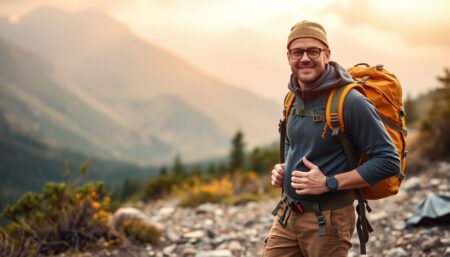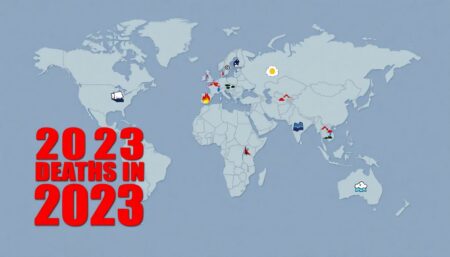In the bustling heart of our cities, where skyscrapers kiss the clouds and neon lights paint the night, the concept of urban survival might seem as out of place as a quiet moment in Grand Central Station. Yet, the reality is that metropolitan areas, with their vast populations and complex infrastructure, can present unique challenges in times of crisis. This is where the art of ‘city prepping’ comes into play, and why we’ve compiled this comprehensive guide, ‘Urban Survival: 15 Skills Every City Prepper Must Know’.
According to a United Nations report, over 55% of the world’s population lives in urban areas, a proportion that is expected to rise to 68% by 2050. This means that a significant majority of us are city dwellers, navigating the concrete jungle with its own set of rules and resources. But what happens when the lights go out, the water stops flowing, or the streets become impassable? Are you ready to face the urban wilderness?
This article is not about turning you into a survivalist hermit, but rather equipping you with the essential skills to navigate unexpected challenges in the city. We promise to demystify urban preparedness, making it accessible and relevant to your everyday life. By the end of this article, you’ll have a solid understanding of 15 crucial skills that could mean the difference between a minor inconvenience and a major catastrophe. So, whether you’re a seasoned prepper or a curious city slicker, grab a coffee, get comfortable, and let’s dive into the world of urban survival together.
Mastering Metropolitan Preparedness in the Concrete Jungle
In the pulsating heart of the concrete jungle, where skyscrapers kiss the heavens and the rhythm of life is a symphony of honks and hums, lies a unique challenge: mastering metropolitan preparedness. This urban labyrinth, with its sprawling streets and towering structures, presents a distinct set of obstacles and opportunities. From navigating the intricate web of public transportation to understanding the language of neon lights and graffiti, the city demands a certain savoir-faire. Yet, it’s also a place of resilience, where communities come together in the face of adversity, be it a sudden downpour or a power outage. Mastering metropolitan preparedness is about more than just knowing the quickest route to the subway; it’s about understanding the city’s ebb and flow, its hidden gems, and its secret shortcuts. It’s about being a part of the city’s heartbeat, ready to adapt and thrive in its ever-changing landscape. So, let’s dive into the concrete jungle, armed with curiosity, respect, and a keen sense of direction, ready to master the art of metropolitan preparedness.

Understanding Your Urban Environment
In the pulsating heart of our modern world, cities stand as testament to human ingenuity and resilience. However, navigating this concrete jungle presents unique challenges and opportunities that can significantly impact our daily lives, especially during emergencies. Understanding your urban environment is not just about knowing your way around; it’s about being equipped with the knowledge that can make the difference between a minor inconvenience and a major crisis.Firstly, let’s delve into the challenges. Urban environments are dynamic, with constant construction, deconstruction, and reconstruction. This fluidity can make it difficult to keep track of the city’s layout, leading to confusion during emergencies. Additionally, cities are often densely populated, which can strain infrastructure and resources, exacerbating issues during disasters. Potential hazards lurk in every corner, from crumbling buildings to underground utilities, and understanding these hazards is crucial for safety.Now, let’s explore the opportunities. Cities are hubs of innovation and connectivity. They are designed with infrastructure that, when understood, can be utilized to our advantage. For instance, knowing the city’s public transportation network can help you evacuate quickly during an emergency. Understanding the layout can help you find alternative routes when main roads are blocked. Moreover, cities are home to diverse communities, each with unique skills and resources that can be tapped into during crises.Understanding your urban environment is not a one-time task but an ongoing process. It involves familiarizing yourself with the city’s layout, infrastructure, and potential hazards. Here are some steps to help you:
- Learn the city’s layout: Study maps, use apps, and explore on foot. Familiarize yourself with major roads, public transportation routes, and important landmarks.
- Understand the infrastructure: Know where essential services like hospitals, fire stations, and police stations are located. Understand how water, electricity, and gas are supplied to your area.
- Identify potential hazards: Look out for buildings in disrepair, underground utilities, and other potential hazards. Report these to local authorities if necessary.
- Stay informed: Keep up-to-date with local news and weather reports. Sign up for emergency alert systems.
- Prepare an emergency kit: Have essential supplies ready in case you need to evacuate or stay indoors for an extended period.
In conclusion, understanding your urban environment is not just about knowing your way around; it’s about being proactive, prepared, and empowered. It’s about turning the concrete jungle into a familiar, navigable landscape that can be your ally, not your adversary, during emergencies. So, go ahead, explore your city, learn its secrets, and make it your own. After all, knowledge is power, and in the urban environment, it can be the power to save lives.
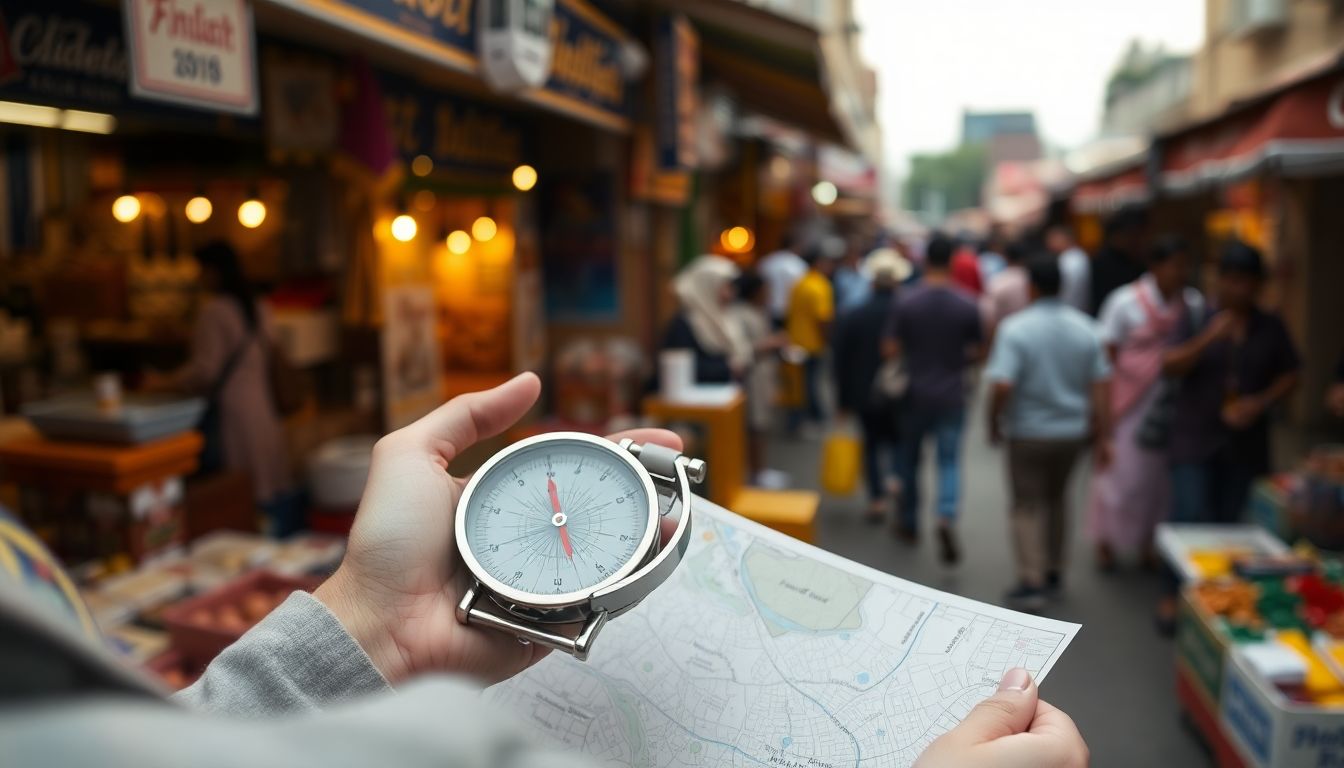
Mastering Urban Navigation
In the age of digital maps and GPS, the art of navigating cities without technology might seem lost, but it’s a skill that’s not only fascinating to master but also crucial in various situations. Urban navigation, at its core, is about understanding the city’s layout and using its features to guide you. The first step is to become familiar with the city’s map. A physical map, not just a digital one, allows you to see the bigger picture and understand the city’s layout in a way that a screen can’t match. Spend time studying the map, identifying major roads, landmarks, and green spaces. These will become your visual cues and waypoints.
Landmarks are your friends in urban navigation. They could be anything from a distinctive building to a particular tree or a unique street art. They help you orient yourself and provide reference points. For instance, if you know that the library is two blocks north of the big clock tower, you can use that to navigate even if you’re not sure of the street names.
Understanding grid patterns is another key aspect. Many cities are laid out in a grid pattern, with streets running north-south and east-west. This can make navigation much easier once you understand the system. For example, if you know you need to go three blocks east, you can do that even if you’re not sure of the street names.
Knowing alternative routes is not just about avoiding traffic congestion during emergencies, but also about exploring the city in a more interesting way. It’s about discovering those quiet side streets, the hidden parks, and the local cafes that you might miss if you’re always sticking to the main roads. It’s about turning navigation into an adventure.
And speaking of emergencies, knowing how to navigate without GPS can be lifesaving. If your phone dies or you’re in an area with poor signal, knowing how to read a map and use landmarks can mean the difference between being lost and finding your way home. So, the next time you’re in a city, try leaving your GPS behind and see where the streets take you. You might just discover a new favorite place, or at least a new appreciation for the art of urban navigation.

Water: The Urban Survival Essential
In the urban jungle, where resources are abundant yet often taken for granted, water stands out as an essential survival element. It’s not just about quenching thirst; water is the lifeblood of our bodies, and its scarcity can quickly turn a city into a harsh, unforgiving environment. Therefore, understanding how to locate and purify water sources within the city is a crucial skill for urban survival.
First, let’s explore some common urban water sources. Rainwater harvesting is an excellent starting point. In cities, rainwater can be collected from rooftops, parking lots, or even large tarpaulins. All you need is a clean container and a way to channel the water into it. Remember, the cleaner the collection surface, the less purification you’ll need later.
Another often overlooked source is water from plants. Many plants, especially those with large leaves, can collect water from the atmosphere through a process called transpiration. By placing a container underneath these plants, you can collect this water, known as fog or dew. This method is particularly useful in humid environments.
Once you’ve collected your water, it’s time to purify it. Here are some common urban items that can help:
- Solar Disinfection (SODIS): Fill a clear plastic bottle with water and place it in direct sunlight for at least six hours. The sun’s UV rays kill bacteria and viruses.
- Boiling: Bring the water to a rolling boil for at least one minute (or three minutes at higher altitudes). Let it cool before drinking.
- Purification Tablets: These are widely available and can be found in many urban survival kits. They use chemicals like chlorine dioxide or iodine to kill bacteria and viruses.
- Activated Charcoal: This can help remove some impurities and improve the taste of water. It doesn’t kill bacteria, so it should be used in conjunction with other purification methods.
In conclusion, water is indeed the urban survival essential. With a bit of knowledge and some creativity, you can turn the city into your water oasis. So, the next time it rains, or you see a large plant, remember, you’re looking at a potential water source. Stay hydrated, urban survivors!

Urban Food Sources and Gardening
In the heart of bustling cities, the concept of urban food sources has evolved, transforming concrete jungles into lush, edible landscapes. Urban environments offer a plethora of food sources, from wild foraging to vertical gardening, allowing city dwellers to cultivate and harvest fresh, nutritious produce right in their backyards or even on their balconies.
Foraging, the practice of gathering wild plants for food or medicine, is an ancient art that’s making a comeback in urban settings. Dandelions, purslane, and even invasive species like Japanese knotweed can be harvested responsibly from public spaces, providing a wealth of free, organic ingredients. However, it’s crucial to ensure you’re positively identifying plants and avoiding areas contaminated by pollution or pesticides.
Urban farming, once a niche concept, is now a thriving movement that’s redefining the way we grow food. Community gardens, rooftop farms, and even vacant lots are being transformed into productive green spaces. Techniques like square foot gardening, which maximizes space by dividing plots into one-foot squares, allow even the smallest of spaces to yield an abundance of crops. Container gardening is another popular method, enabling city residents to grow food on balconies, patios, or even windowsills.
Vertical gardening is a space-saving solution that’s particularly well-suited to urban environments. By growing crops upwards, rather than outwards, gardeners can maximize their yield in minimal space. This can be achieved through simple DIY structures like pallet gardens or more complex systems like hydroponic towers. Fruiting plants like tomatoes, cucumbers, and peas can be trained to grow vertically, while leafy greens and herbs can be cultivated in hanging pockets or wall-mounted planters.
Once harvested, preserving and storing food for long-term use is essential for ensuring a continuous supply of fresh produce. Canning, fermenting, and dehydrating are all effective methods for extending the shelf life of fruits and vegetables. Root cellars, while not common in urban settings, can be replicated with simple root cellar kits or even a spare closet with the right conditions. Proper storage also plays a crucial role in preserving food. Cool, dark, and dry conditions are ideal for most produce, while some crops, like potatoes and onions, require specific temperature and humidity levels.
By embracing urban food sources and gardening, city residents can reduce their carbon footprint, improve access to fresh, nutritious food, and create vibrant, green communities. Whether you’re foraging in a local park or cultivating a vertical garden in your apartment, there’s a world of culinary possibilities waiting to be discovered in the urban jungle.
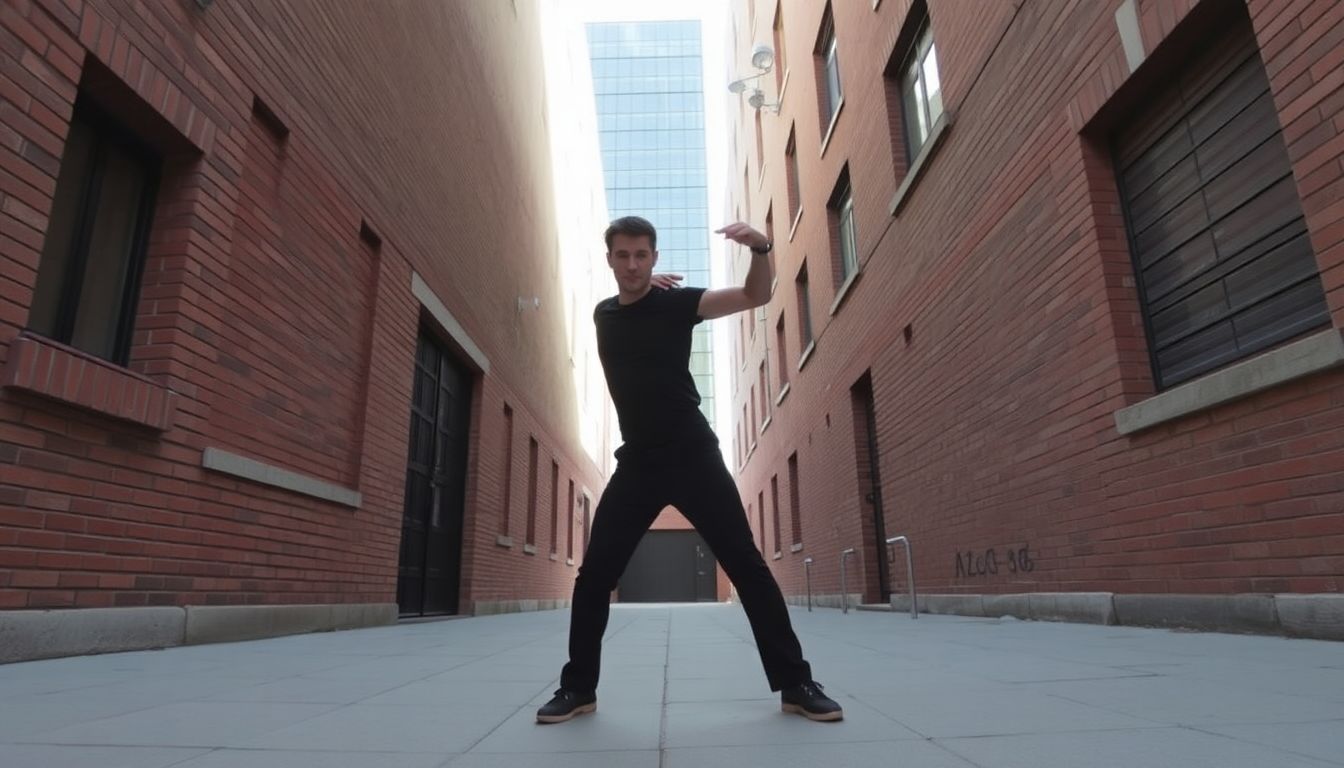
Self-Defense in the City
In the pulsating heart of the city, where life is a symphony of constant motion, the importance of self-defense cannot be overstated. Urban environments, with their bustling crowds and towering structures, present unique challenges and potential threats. Self-defense is not just about physical prowess; it’s about understanding your surroundings, anticipating situations, and knowing when to act or, more importantly, when to walk away. Situational awareness is the first line of defense. It’s about being present, observant, and aware of your surroundings. It’s about noticing that alleyway that’s too dark, the group of people that’s acting suspiciously, or the sudden silence that’s broken only by the distant wail of a siren. It’s about trusting your instincts and acting on them.
When it comes to self-defense techniques, simplicity and practicality are key in an urban environment. Techniques like Krav Maga, Brazilian Jiu-Jitsu, or even basic self-defense classes can equip you with the skills to defend yourself effectively. These techniques focus on real-world scenarios, teaching you how to use your surroundings to your advantage. For instance, a simple pen can become a formidable weapon in the right hands, or a well-placed kick can incapacitate an attacker long enough for you to escape. The key is to use what you have, whether it’s a bag, a book, or even your voice.
However, the best self-defense is the one that prevents a conflict from happening in the first place. This is where de-escalation techniques come into play. It’s about understanding body language, maintaining a calm demeanor, and knowing how to talk your way out of a situation. It’s about being assertive, not aggressive. It’s about making it clear that you’re not a threat, but you’re also not a victim. It’s about understanding that sometimes, the best fight is the one you didn’t have to fight.
In conclusion, self-defense in the city is about more than just knowing how to throw a punch. It’s about understanding your environment, being aware of your surroundings, and knowing how to navigate the urban jungle safely. It’s about being prepared, not paranoid. It’s about having the confidence to stand up for yourself, but also the wisdom to know when to walk away. After all, in the city that never sleeps, it’s the aware, the prepared, and the wise who truly survive.

First Aid and Medical Knowledge
In the bustling heart of the city, where help might not always be a call away, every urban prepper should arm themselves with essential first aid skills and medical knowledge. The ability to treat injuries, administer CPR, and recognize symptoms of common illnesses and conditions can mean the difference between life and death in critical situations.
First, let’s delve into the art of treating injuries. Knowing how to control bleeding, clean wounds, and apply dressings is paramount. Remember, time is of the essence. For severe bleeding, apply direct pressure using a clean cloth or dressing. If the bleeding continues, consider using a tourniquet, but be cautious, as improper use can cause more harm than good. Wounds should be cleaned thoroughly to prevent infection. Use running water and mild soap, then apply an antibiotic ointment and cover with a sterile bandage.
Cardiopulmonary Resuscitation (CPR) is another vital skill. It’s not just about chest compressions; it’s about buying time until professional help arrives. Start by checking the environment and the person for safety. If the person is unresponsive, shout for help and call emergency services. Open the airway using the head-tilt chin-lift maneuver. Check for breathing. If there’s no breathing, start chest compressions. Push hard and fast in the center of the chest, allowing the chest to recoil completely between compressions. For children, use one or two hands depending on their size, and for infants, use two fingers.
Recognizing symptoms of common illnesses and conditions is equally important. Fever, for instance, can indicate anything from a simple cold to a serious infection. High fever in children under 3 months should always be treated as an emergency. Similarly, symptoms like difficulty breathing, chest pain, severe headache, or sudden dizziness could signal life-threatening conditions like asthma attack, heart attack, or stroke.
Lastly, creating a basic urban first aid kit is a must. Start with a sturdy, waterproof container. Include bandages of various sizes, gauze rolls, adhesive tape, antiseptic wipes, latex gloves, tweezers, scissors, pain relievers, an emergency blanket, and any personal medication you might need. Don’t forget to check and restock your kit regularly to ensure everything is in working order.

Urban Shelter and Camouflage
In the heart of urban environments, where concrete jungles replace forests, finding and creating shelter can be a unique challenge. The first step in urban sheltering is to understand the landscape. Abandoned buildings, often overlooked or forgotten, can provide sturdy, if not always comfortable, refuge. These structures, while requiring caution due to potential hazards like unstable foundations or asbestos, offer protection from the elements and a degree of privacy. To locate them, look for signs of disuse such as boarded-up windows, overgrown vegetation, or graffiti. Always approach cautiously, ensuring you’re not trespassing on private property or entering a dangerous structure.
Underground spaces, like subway tunnels, storm drains, or even abandoned basements, can also provide shelter. These spaces are cooler in summer and warmer in winter, but they can be damp, dark, and isolating. Before descending into the underworld, ensure you have a reliable light source and a map of the tunnels to prevent getting lost. Always be aware of potential hazards like flooding or toxic gases.
Camouflage is key in urban environments. Blending in with the landscape isn’t about wearing ghillie suits, but rather about understanding and mimicking the urban aesthetic. Dress in neutral colors and practical, nondescript clothing. Avoid drawing attention to yourself with bright colors or flashy accessories. Carry your gear in a backpack that looks like it could belong to a student or a tourist, not a survivalist. Remember, the goal is not to hide, but to blend in.
Stealth is paramount in urban survival. Move quietly, avoid large groups of people, and stay aware of your surroundings. Use reflective surfaces like windows or mirrors to check for followers. If you must pass through populated areas, do so quickly and purposefully, like a local with somewhere to be. The key is to be unremarkable, to become a part of the urban tapestry. After all, in the city, the best way to hide is often to be seen, but not noticed.
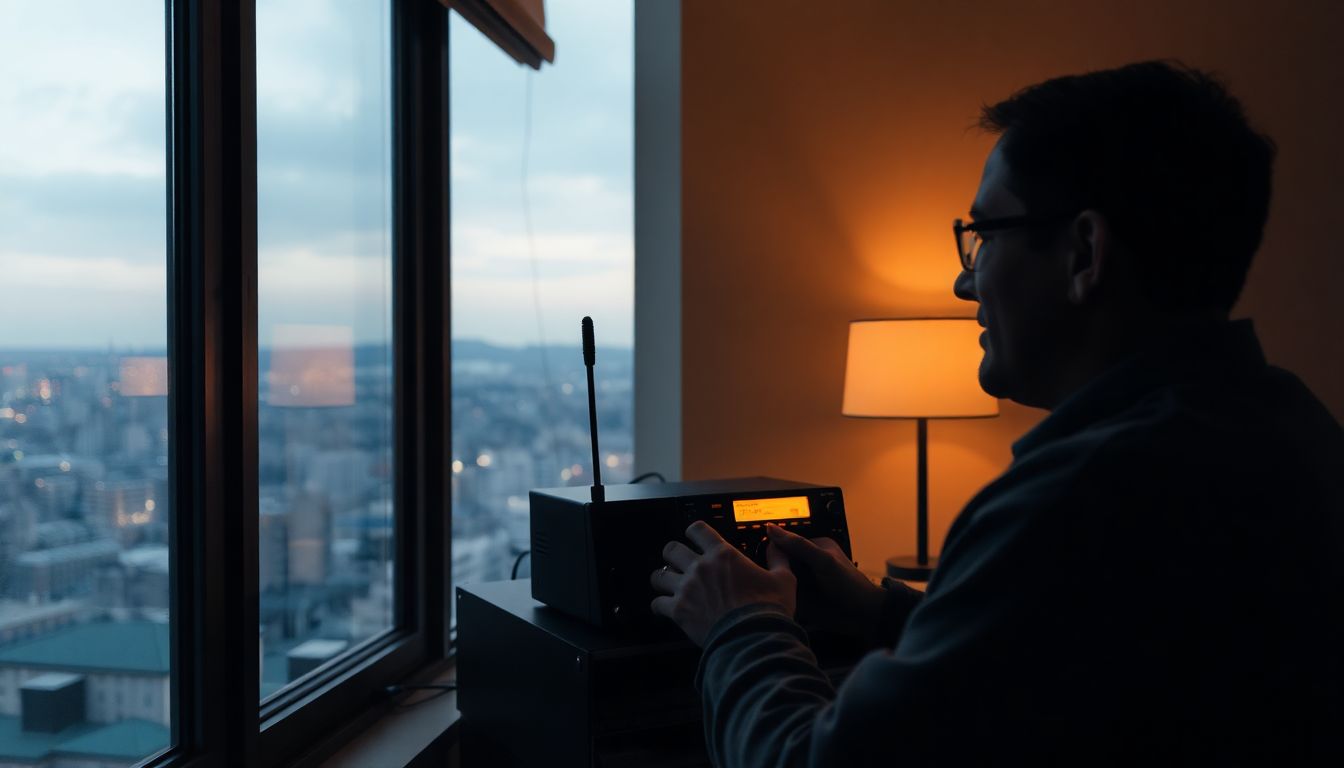
Communication in a Grid-Down Scenario
In the event of a grid-down scenario, where electricity and functioning cell towers are unavailable, communication becomes a critical challenge, especially in an urban environment. Traditional methods of communication, such as mobile phones and the internet, are likely to be inoperable. However, there are several alternative methods that can be employed to maintain communication and coordination among groups or families.
One of the most reliable methods is the use of ham radios. These radios operate on various frequencies and can be used to communicate over long distances, even when cell towers are down. They require a license to operate, but in an emergency situation, rules may be relaxed. Ham radio operators often have extensive knowledge of emergency communication protocols and can provide valuable assistance.
Walkie-talkies, or handheld transceivers, are another useful tool. They operate on various frequencies and can be used for short to medium range communication. While they may not have the range of ham radios, they are more portable and can be used for local communication and coordination. It’s important to note that walkie-talkies require batteries, so having a backup power source or rechargeable batteries is crucial.
Signaling with light can also be an effective method of communication, especially at night. Morse code can be used to send messages using a flashlight or other light source. This method is silent, which can be an advantage in certain situations, but it requires knowledge of Morse code and clear line of sight.
Regardless of the method chosen, it’s crucial to have a communication plan in place. This plan should include designated meeting points, backup plans, and a schedule for checking in. It’s also important to establish a system for passing on information, such as a runner or a designated person to carry messages. The plan should be clear, simple, and understood by all members of the group or family. Regular practice and drills can help ensure that everyone knows what to do in an emergency situation.
In conclusion, while a grid-down scenario presents significant challenges to communication, there are several methods that can be used to maintain contact and coordination. Ham radios, walkie-talkies, and signaling with light are all viable options, but they require planning, practice, and the right equipment. A well-thought-out communication plan can mean the difference between chaos and order in an emergency situation.

Urban Energy: Powering Up in the City
In the heart of our bustling cities, the quest for sustainable energy is not just a necessity, but an exciting opportunity to innovate and create. Urban environments, with their unique landscapes and resources, offer a plethora of methods to generate power, transforming our concrete jungles into green powerhouses.
The sun, a constant companion in our cities, is a formidable source of energy. Solar panels, sleek and efficient, can be integrated into building designs, transforming rooftops into power stations. They harness the sun’s rays, converting them into electricity that can power homes and businesses. Even small-scale solar installations on balconies or windowsills can make a significant difference.
Wind, another abundant urban resource, can be tapped into using vertical axis wind turbines. These innovative designs can generate electricity even in low wind speed environments, making them perfect for cityscapes. They’re also safer for birds and bats, as they operate at lower speeds than traditional horizontal turbines.
Hydro power, while less common, is not entirely out of reach in urban settings. Small-scale hydroelectric systems can be installed in urban waterways, harnessing the power of moving water to generate electricity. These systems are not only sustainable but also help manage waterways by reducing flood risks.
However, generating power is just one part of the equation. Storing it is equally crucial, especially in urban environments where power demand fluctuates greatly. Energy storage systems, like batteries, ensure a steady supply of power even when the sun isn’t shining, or the wind isn’t blowing.
Creating a DIY power bank using common urban items is not only a fun project but also a great way to understand energy storage. Here’s a simple way to make one using a few AA batteries, a 9V battery clip, and a USB cable:
- Connect the positive (red) wire of the 9V battery clip to the positive (red) wire of the USB cable.
- Connect the negative (black) wire of the 9V battery clip to the negative (black) wire of the USB cable.
- Insert the AA batteries into the clip, ensuring the positive ends face up.
- Plug the USB cable into a device to charge it.
This simple setup converts the DC power from the batteries to USB power, charging your device. It’s a small step, but it’s a testament to the power of innovation and the abundance of resources in our cities.

Bartering and Building Community
In the heart of an urban survival scenario, the importance of building a community and mastering the art of bartering cannot be overstated. When the grid goes down, and resources become scarce, it’s the network of trusted individuals you’ve cultivated that will make the difference between thriving and merely surviving. Building such a community is not just about sharing canned goods or first aid supplies; it’s about forging relationships based on mutual respect, trust, and the exchange of valuable skills and knowledge.
Imagine a bustling city neighborhood, now transformed into a self-sustaining microcosm. At the core of this new society are the bartering relationships that bind its inhabitants. Bartering, at its essence, is the exchange of goods or services without the use of money. It’s a system that encourages self-sufficiency, resourcefulness, and community cooperation. In an urban survival scenario, where currency may hold little value, bartering becomes a lifeline.
To create a network of trusted individuals, start by identifying your neighbors and their skills. This could be anything from medical professionals who can provide first aid, to engineers who can repair damaged infrastructure, or gardeners who can cultivate food in community plots. The key is to look for skills that complement your own and can fill gaps in your knowledge and resource base.
Once you’ve identified potential community members, the next step is to establish trust. This could involve sharing meals together, working on community projects, or simply spending time getting to know each other. Trust is the foundation upon which bartering relationships are built.
Now, let’s talk about what’s valuable in an urban survival scenario. The most obvious items are food, water, and medical supplies. But don’t overlook other essentials like tools, seeds, fuel, and knowledge. Here’s a list of valuable skills and items to consider when bartering:
- Food and water purification methods
- Medical knowledge and first aid supplies
- Gardening and farming skills
- Construction and repair skills
- Electrical and mechanical knowledge
- Self-defense and security expertise
- Carpentry and woodworking skills
- Clothing and textiles
- Fuel and energy sources
- Seeds and plant starts
- Tools and equipment
- Knowledge and education
Remember, the goal of bartering is not to hoard resources, but to create a sustainable system where everyone has access to what they need to survive and thrive. It’s about building a community where each individual’s strengths can support and uplift the whole. In an urban survival scenario, that’s not just a nice idea
- it’s a necessity.

Urban Fitness: Staying in Shape in the City
In the pulsating heart of the city, where concrete jungles replace the green ones, maintaining physical fitness might seem like a daunting task. However, it’s not just about aesthetics; staying in shape in the urban environment is crucial for survival, both physically and mentally. Urban areas present unique challenges, from air pollution to increased stress levels, making regular exercise not just a luxury, but a necessity.
Fortunately, you don’t need a sprawling park or a fully-equipped gym to stay fit. Bodyweight exercises are your best friends in the city. Push-ups, squats, lunges, and planks can be done in the smallest of apartments, requiring no equipment except for your own body. For a full-body workout, consider incorporating these moves into a high-intensity interval training (HIIT) routine. These workouts not only improve your cardiovascular health and strength but also boost your metabolism, helping you burn calories even when you’re not working out.
Yoga and Pilates are also excellent choices for urban dwellers. They improve flexibility, balance, and core strength, and can be done in a small space with minimal equipment. Plus, they promote mindfulness, which brings us to the importance of mental fitness.
Mental fitness is often overlooked but is as crucial as physical fitness, especially in urban environments. Maintaining a positive attitude during emergencies can mean the difference between panic and calm. Regular meditation or mindfulness practices can help you stay centered and resilient. During emergencies, break down tasks into manageable steps. For instance, if you’re evacuating, focus on getting to the next block, not the entire journey. This can help prevent overwhelm and keep your spirits up.
Remember, staying fit in the city is not just about surviving, but thriving. It’s about embracing the urban landscape, using it to your advantage, and making your body and mind stronger, one workout, one breath at a time.

Mental Preparedness: Thriving in the Urban Jungle
Navigating the urban jungle, with its concrete labyrinths and ceaseless hum, can be both exhilarating and daunting. While we often focus on physical preparedness, mental readiness is equally crucial for thriving in this environment. Mental preparedness is not about cultivating a stoic, unfeeling demeanor, but rather, it’s about equipping ourselves with the psychological tools to maintain a positive attitude, manage stress, and make rational decisions, especially during emergencies.
Firstly, maintaining a positive attitude is not about ignoring challenges, but rather, reframing them. This can be achieved through mindfulness, a practice that helps us stay present and non-judgmental. It’s about acknowledging the stressor, accepting it, and then choosing to respond rather than react. For instance, instead of thinking ‘I’m stuck in traffic, this is terrible!’, try ‘I’m stuck in traffic, this is an opportunity to practice patience and listen to that podcast I’ve been meaning to.’
Managing stress is another vital aspect of mental preparedness. The urban jungle is a constant source of stress, from the daily commute to the relentless pace of work. Regular exercise, a healthy diet, and adequate sleep are not just physical necessities, but also powerful stress relievers. Moreover, cultivating hobbies and downtime can provide much-needed respite from the urban grind. Remember, it’s not about never feeling stressed, but about having the resilience to bounce back.
Rational decision-making is another key component of mental preparedness. This involves staying calm under pressure, gathering information, and then acting. It’s about being able to think clearly even when everything around you seems to be falling apart. This skill can be honed through practice, such as role-playing emergency scenarios or engaging in problem-solving puzzles.
Developing mental resilience and adaptability is an ongoing process. It’s about cultivating a growth mindset, where challenges are seen as opportunities for growth rather than threats. It’s about being open to learning and change. It’s about understanding that setbacks are a normal part of life, not signs of failure. And finally, it’s about having a support network, whether that’s friends, family, or professional help, to turn to in times of need.
In essence, mental preparedness is about equipping ourselves with the psychological tools to navigate the urban jungle with grace, resilience, and a positive attitude. It’s about understanding that while we can’t control the environment, we can control how we respond to it. So, let’s embrace the urban jungle, not as a source of stress, but as an opportunity for growth and learning.





